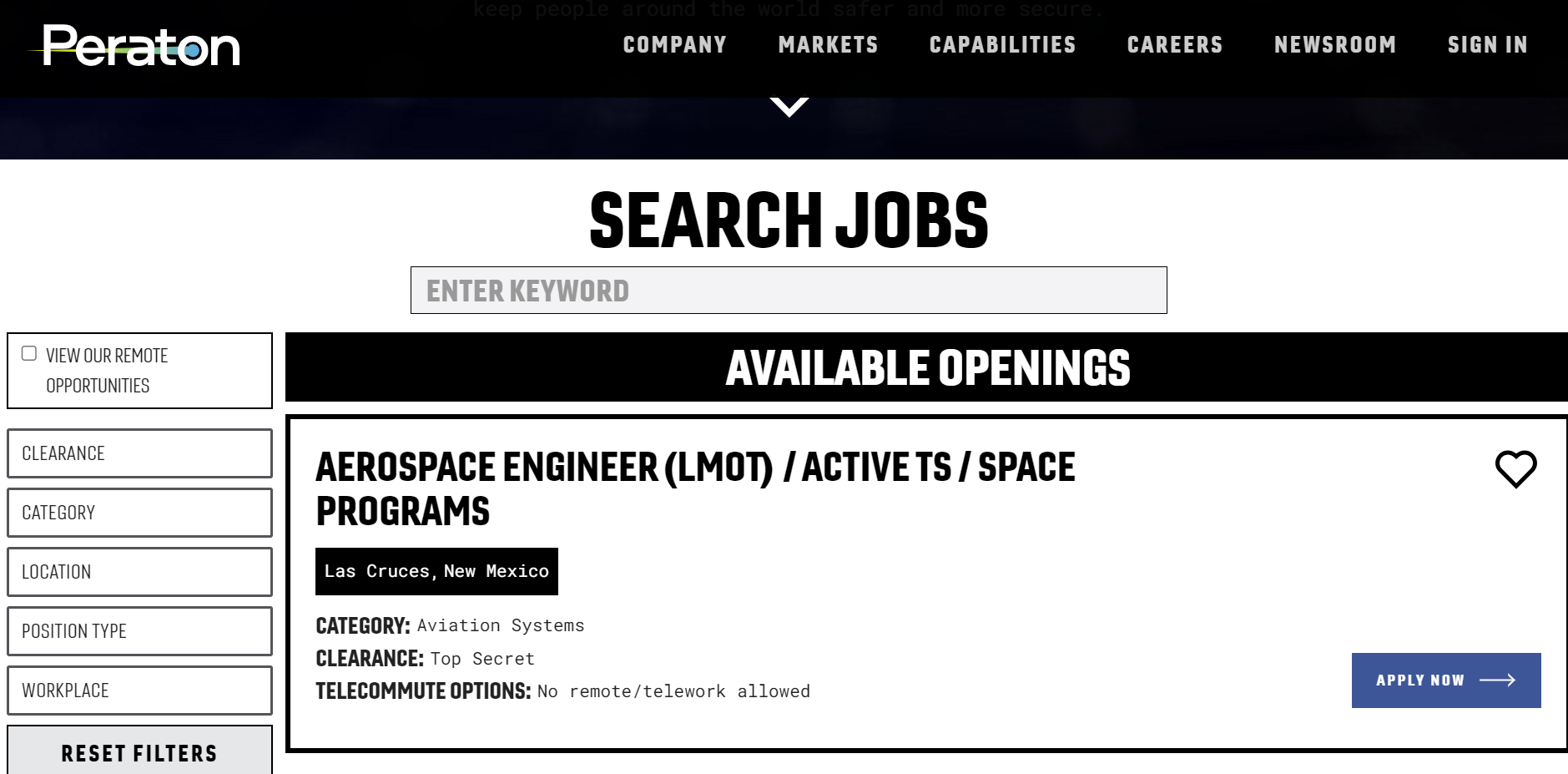Peraton, a next-generation national security company, is continually searching for talent including employees with high-security clearances. But the real win for Peraton has been courting internal candidates.
The company is an integrator and enterprise IT provider for the US government. Peraton provides cybersecurity, digital, cloud, operations and engineering services for space, intelligence, homeland security, health and defense among others.
In Peraton's Supernova Award entry, the company noted that it saw internal job board applicants increase 9.8% and more engagement overall. I caught up with Cari Bohley, Vice President of Talent Management at Peraton, to talk about the Supernova finalist entry in the Future of Work: Human Capital Management category.
Here are the highlights from our conversation.
Peraton's role. Bohley said Peraton is a government services contractor focused on national security. Projects can range from rocket launches to intelligence, data analytics, maritime security and modernization.
A history of mergers and acquisitions. Peraton was a spinoff of L3Harris Technologies in 2017 and then made a series of acquisitions including Solers (2019), the IT and mission support unit from Northrop Grumman (2021) and Perspecta (2021). "In just three years we grew to 19,000 employees," said Bohley. "Even though we've been around since 2017, the legacy of all the different companies means we have people with a lot of tenure and years of service."
The talent management game. Bohley said competition in Peraton's industry is fierce and there are "very unique requirements we're trying to fill." Peraton needed to cultivate internal applicants while courting both active and passive external candidates. "Without something like AI it's hard to look for unique information and indicators," said Bohley. "The other piece we're looking for is passive talent. We're looking for people who aren't necessarily looking for a new job and AI helps us identify them."

SeekOut's role. Bohley said Peraton used the SeekOut platform for its AI-driven talent management. She said Peraton had worked with SeekOut for a few years and expanded the contract when the company realized there was more power to find talent. SeekOut Recruit, Grow Internal Talent and Grow Career Compass were deployed. "It just made sense for us to explore the expanded capabilities SeekOut already had," said Bohley, who noted the new modules aligned with Peraton's employee engagement and career growth strategies.
SeekOut's technology integrates with multiple Peraton systems including HR and learning management so it can surface patterns for employees on career paths.
Business metrics. Bohley said retention of employees and mobility were the primary business metrics to justify the project. "Not only do we retain our employees, but we have a place for them to grow their career and move them throughout the organization," said Bohley. "If we're able to do that then we can bring in new employees from outside and get them to build careers. It becomes an end-to-end process for helping our folks build their careers."
If Peraton is successful, it should be able to reduce turnover, increase engagement and mobility and staff programs internally instead of having churn, Bohley said.
Difficult roles to hire. "In our industry it's really high clearance talent that's difficult. These are people that are doing top secret work for the government," said Bohley. "There are a number of companies that do the work we do, but it's a small industry."
Building the business case. Bohley said IT teams need to focus on key metrics that matter to leadership and the story behind the business case. "Make sure you've got a strong business case and get the buy-in," said Bohley. "Having a sponsor to help you is incredibly important."
Why internal candidates matter. "Internally, we know our candidates. We know the types of projects they worked on. We know their performance and we don't have that with external candidates," explained Bohley. "When we're looking for positions that are more strategic it really helps us to source internally when we have so much more data."
Advice for HR leaders. Bohley said "you have to go into AI. You don't have a choice." She said AI has been critical because she has a small team and there are productivity gains when generating ideas, developing training and other items. "AI is something for all of us to take advantage of," she said.
Insights Archive
- Starbucks lands new CEO from Chipotle: Here’s how digital strategy could change
- Disruption is coming for enterprise software
- Enterprise software vendors shift genAI narrative: 'GenAI is just software'
- The generative AI buildout, overcapacity and what history tells us
- Enterprises start to harvest AI-driven exponential efficiency efforts
- GenAI may be the new UI for enterprise software
- Education tech in turmoil amid genAI: Why consolidation is next
- 14 takeaways from genAI initiatives midway through 2024
- OpenAI and Microsoft: Symbiotic or future frenemies?
- AI infrastructure is the new innovation hotbed with smartphone-like release cadence
- Don't forget the non-technical, human costs to generative AI projects
- GenAI boom eludes enterprise software...for now
- The real reason Windows AI PCs will be interesting
- Copilot, genAI agent implementations are about to get complicated
- Generative AI spending will move beyond the IT budget
- Financial services firms see genAI use cases leading to efficiency boom


